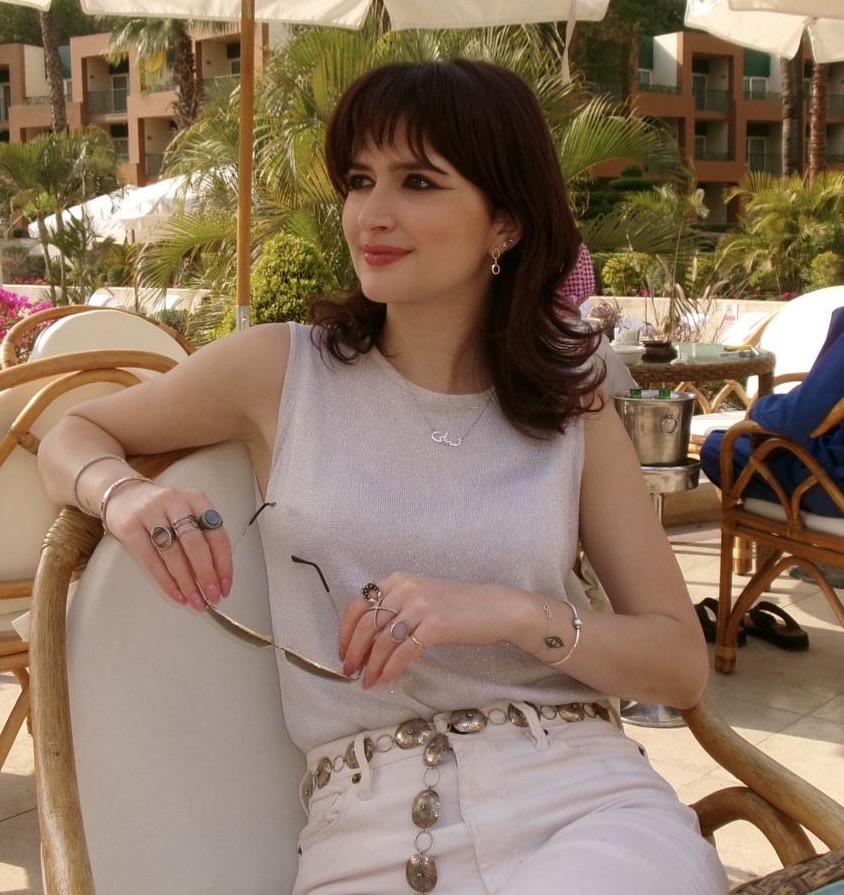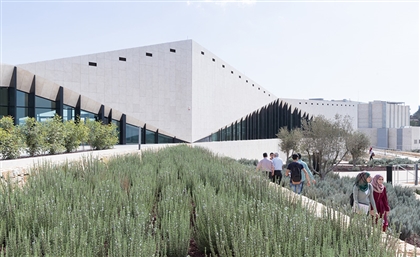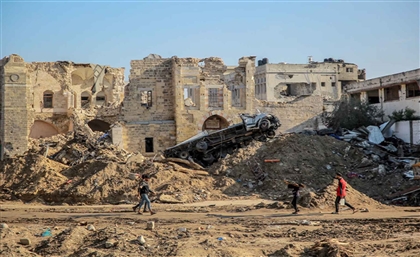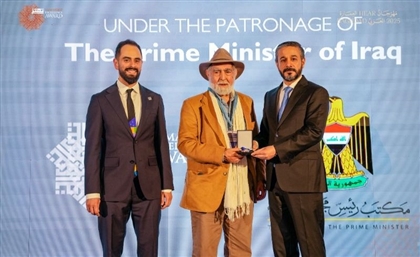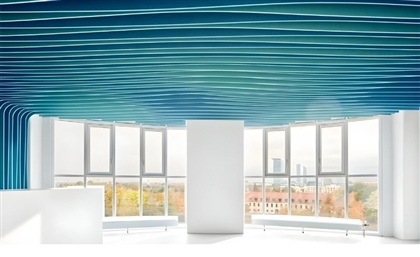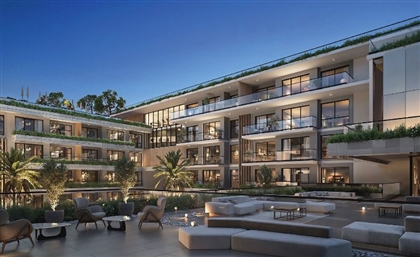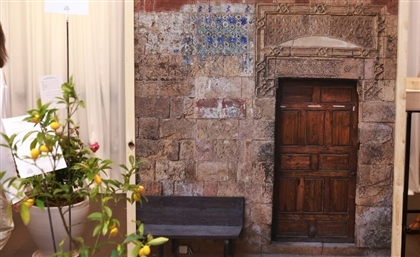RIWAQ Centre Fights to Safeguard Gaza’s Architecture Amidst Genocide
As Gaza's cultural heritage sites fall under attack by Israeli forces, the Ramallah-based RIWAQ Centre for Architectural Conservation intervenes to conserve them.
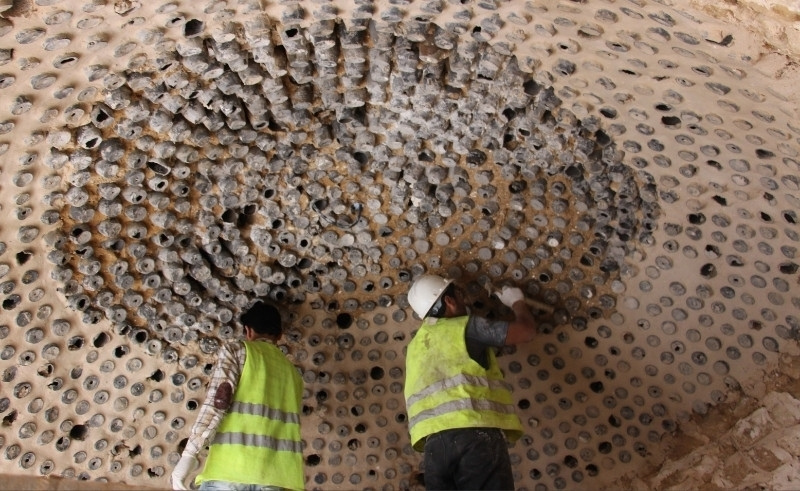
Gaza’s largest and oldest mosque has been destroyed and rebuilt more than once. Over a thousand years old, the Grand Omari Mosque holds a minaret to the sky like a candle, its flame inextinguishable. It is one of many historic sites that the RIWAQ Centre for Architectural Conservation is trying to protect, document and rebuild throughout Israeli bombardment. -be024ec4-abca-4bef-b7bf-adf7cc401c12.jpg) Founded in 1991, Ramallah-based RIWAQ preserves Palestinian collective memory through revitalisation and registration of cultural heritage sites across the West Bank, Jerusalem and Gaza. The organisation rehabilitates these spaces in rural areas as community centres, in addition to creating extensive archives of hundreds of Palestinian villages and over 50,000 historic buildings.
“The Omari Mosque was rebuilt because people insisted on their identity,” Shatha Safi, director of RIWAQ, told SceneHome, describing the site’s reconstruction after it was severely damaged by British bombardment during World War II. The mosque was restored in 1925 by the Supreme Muslim Council.
A century later, the mosque was targeted again, this time by Israeli forces in the weeks following October 7th, 2023. During a brief ceasefire, RIWAQ in collaboration with the Ministry of Tourism and Antiquities, the Center for Cultural Heritage Preservation (CCHP) and the Islamic Waqf started the process of damage assessment and rescue; the site has been targeted and bombed again more than once after their interventions.
Suad Amiry founded RIWAQ 34 years ago with a mission to protect whatever remains from the Israeli destruction of Palestinian cultural heritage. She grew up as the daughter of a refugee in Jordan. Her father was expelled from Jaffa during the Nakba in 1948 after Israeli forces razed his neighbourhood to rubble. He told her of the 420 villages that met the same fate between 1948 and 1952—a number that haunted her.
Founded in 1991, Ramallah-based RIWAQ preserves Palestinian collective memory through revitalisation and registration of cultural heritage sites across the West Bank, Jerusalem and Gaza. The organisation rehabilitates these spaces in rural areas as community centres, in addition to creating extensive archives of hundreds of Palestinian villages and over 50,000 historic buildings.
“The Omari Mosque was rebuilt because people insisted on their identity,” Shatha Safi, director of RIWAQ, told SceneHome, describing the site’s reconstruction after it was severely damaged by British bombardment during World War II. The mosque was restored in 1925 by the Supreme Muslim Council.
A century later, the mosque was targeted again, this time by Israeli forces in the weeks following October 7th, 2023. During a brief ceasefire, RIWAQ in collaboration with the Ministry of Tourism and Antiquities, the Center for Cultural Heritage Preservation (CCHP) and the Islamic Waqf started the process of damage assessment and rescue; the site has been targeted and bombed again more than once after their interventions.
Suad Amiry founded RIWAQ 34 years ago with a mission to protect whatever remains from the Israeli destruction of Palestinian cultural heritage. She grew up as the daughter of a refugee in Jordan. Her father was expelled from Jaffa during the Nakba in 1948 after Israeli forces razed his neighbourhood to rubble. He told her of the 420 villages that met the same fate between 1948 and 1952—a number that haunted her.
-b5bb0795-5a6b-4097-b61f-ec352656f527.jpg) “What the Israelis wanted when they destroyed 420 villages was to erase memory, to erase the existence of the Palestinians,” Amiry said. “The most important thing is to not allow that. So the protection of cultural heritage is the protection of memory. And the protection of memory is the protection of identity. We created a generation of people who believed in the importance of cultural heritage as a way of resistance, as a way of maintaining identity, as a way of maintaining memory."
At RIWAQ, architectural preservation is not about the physical stones, but about cultural heritage as a pillar of socioeconomic development.
“Cultural heritage means dignity and job creation," Safi said. "It gives people purpose, income, and psychological recovery. Some Gazans said their lives regained meaning when they worked on recovery plans. These sites provide spaces for children’s organisations, homeless shelters, worship, and academic institutions. This is why we’re keen on protecting cultural heritage, even during genocide.”
RIWAQ continues to operate in Gaza since the genocide began two years ago, a period in which UNESCO has verified damage to 110 cultural heritage sites. Before October 7th, 2023, they worked with local partners on one restoration project per year in the Strip, namely the Iwan Center for Cultural Heritage at the Islamic University of Gaza, and visited three to four days a month when Israeli forces permitted their entry.
But after October 7th, they had to develop a new plan for intervention in Gaza. Safi broke down their three-prong strategy: direct support of and collaboration with Gazans, immediate repairs when possible, followed by full rehabilitation—which can only happen after a long-term ceasefire. The process of heritage recovery relies on a cumulative approach on a national scale that brings together all heritage professionals, entities and work in a complementary manner.
The first stage is RIWAQ’s current priority. They are partnering with cultural practitioners in Gaza who can assess and document the destruction on the ground, while also helping RIWAQ plan for eventual reconstruction. But, Safi said, the well-being of their employees is most important.
“We asked: Are they safe? Do they have internet? A place to work? A place to stay? Do they have income?” Safi said. “Nobody can work when their children are hungry or when they don’t have shelter.”
The organisation has also coordinated reconstruction projects with other cultural heritage practitioners through a joint platform under Palestine’s Ministry of Tourism, and Antiquities. Together, they identified criteria for intervention, accessible sites, and places to prioritise.
Among them the Grand Omari Mosque and Al-Qissariya Market in Gaza City—two of the six sites where RIWAQ has carried out interventions since October 7th. Their team in Gaza currently includes five architects and engineers, plus contractors and workers.
“What the Israelis wanted when they destroyed 420 villages was to erase memory, to erase the existence of the Palestinians,” Amiry said. “The most important thing is to not allow that. So the protection of cultural heritage is the protection of memory. And the protection of memory is the protection of identity. We created a generation of people who believed in the importance of cultural heritage as a way of resistance, as a way of maintaining identity, as a way of maintaining memory."
At RIWAQ, architectural preservation is not about the physical stones, but about cultural heritage as a pillar of socioeconomic development.
“Cultural heritage means dignity and job creation," Safi said. "It gives people purpose, income, and psychological recovery. Some Gazans said their lives regained meaning when they worked on recovery plans. These sites provide spaces for children’s organisations, homeless shelters, worship, and academic institutions. This is why we’re keen on protecting cultural heritage, even during genocide.”
RIWAQ continues to operate in Gaza since the genocide began two years ago, a period in which UNESCO has verified damage to 110 cultural heritage sites. Before October 7th, 2023, they worked with local partners on one restoration project per year in the Strip, namely the Iwan Center for Cultural Heritage at the Islamic University of Gaza, and visited three to four days a month when Israeli forces permitted their entry.
But after October 7th, they had to develop a new plan for intervention in Gaza. Safi broke down their three-prong strategy: direct support of and collaboration with Gazans, immediate repairs when possible, followed by full rehabilitation—which can only happen after a long-term ceasefire. The process of heritage recovery relies on a cumulative approach on a national scale that brings together all heritage professionals, entities and work in a complementary manner.
The first stage is RIWAQ’s current priority. They are partnering with cultural practitioners in Gaza who can assess and document the destruction on the ground, while also helping RIWAQ plan for eventual reconstruction. But, Safi said, the well-being of their employees is most important.
“We asked: Are they safe? Do they have internet? A place to work? A place to stay? Do they have income?” Safi said. “Nobody can work when their children are hungry or when they don’t have shelter.”
The organisation has also coordinated reconstruction projects with other cultural heritage practitioners through a joint platform under Palestine’s Ministry of Tourism, and Antiquities. Together, they identified criteria for intervention, accessible sites, and places to prioritise.
Among them the Grand Omari Mosque and Al-Qissariya Market in Gaza City—two of the six sites where RIWAQ has carried out interventions since October 7th. Their team in Gaza currently includes five architects and engineers, plus contractors and workers.
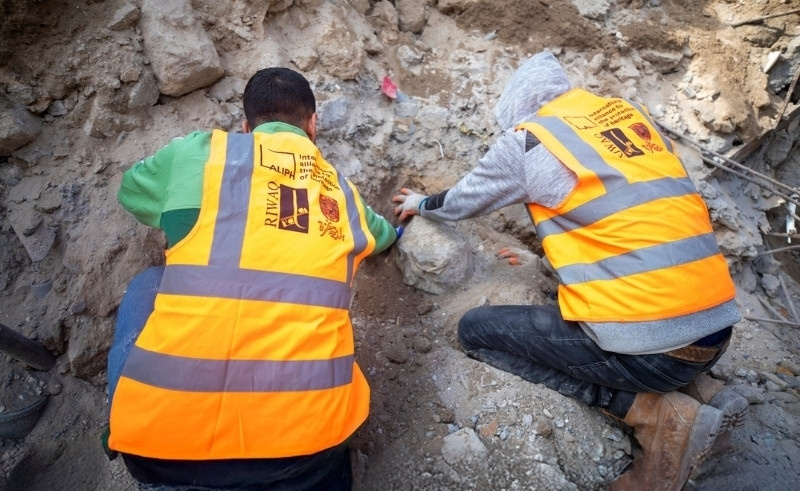 In these heritage rescue efforts, workers only entered grounds that were relatively safe, often during brief ceasefires. Intervention was mainly limited to moving, categorising, and documenting stones since they could not rebuild without the proper materials. RIWAQ also monitored rubble removal to ensure that artefacts were not among the discarded material and that the rubble removal itself did not destabilise structures.
In these heritage rescue efforts, workers only entered grounds that were relatively safe, often during brief ceasefires. Intervention was mainly limited to moving, categorising, and documenting stones since they could not rebuild without the proper materials. RIWAQ also monitored rubble removal to ensure that artefacts were not among the discarded material and that the rubble removal itself did not destabilise structures.
-10874e80-21e7-4717-a665-11540a8ca947.jpg) Now, the centre is preparing for different scenarios of rapid intervention after a ceasefire. They have already identified 30 sites for immediate intervention from a list of over 200 within a common plan that was mainly developed with the CCHP, the Ministry, the Municipality of Gaza and the NGO Première Urgence Internationale (PUI). The criteria for reconstruction will include safety of the site, level of damage, access to materials, and the historical and social importance of the building within the community. RIWAQ has also secured funding commitments from donors so that they can act quickly once there is a ceasefire.
Now, the centre is preparing for different scenarios of rapid intervention after a ceasefire. They have already identified 30 sites for immediate intervention from a list of over 200 within a common plan that was mainly developed with the CCHP, the Ministry, the Municipality of Gaza and the NGO Première Urgence Internationale (PUI). The criteria for reconstruction will include safety of the site, level of damage, access to materials, and the historical and social importance of the building within the community. RIWAQ has also secured funding commitments from donors so that they can act quickly once there is a ceasefire.
-ba316694-bb31-485f-b8e1-13a70fe9008f.jpg) Safi believes that Palestinians in Gaza should be key participants in post-ceasefire reconstruction. “People who have lost their homes, their family members, even their health, need to recover their city and be part of the decision-making in this process,” she said.
Safi believes that Palestinians in Gaza should be key participants in post-ceasefire reconstruction. “People who have lost their homes, their family members, even their health, need to recover their city and be part of the decision-making in this process,” she said.
-4d69fa80-f947-4aa6-b1f4-b8eab2f8549b.jpg) Safi explained that after a ceasefire, the priority will be housing, schools, and health centres. But despite more pressing reconstruction needs, she said, cultural heritage is integral to the identity and history of Gaza. “So we need regulations to keep it safe.”
“People ask, what’s the use of stones if people are losing their lives?” Safi’s answer: reclaiming the city, reclaiming identity, and resisting genocide. “Cultural heritage,” she said, “is a testimony for future generations.”
Safi explained that after a ceasefire, the priority will be housing, schools, and health centres. But despite more pressing reconstruction needs, she said, cultural heritage is integral to the identity and history of Gaza. “So we need regulations to keep it safe.”
“People ask, what’s the use of stones if people are losing their lives?” Safi’s answer: reclaiming the city, reclaiming identity, and resisting genocide. “Cultural heritage,” she said, “is a testimony for future generations.”



